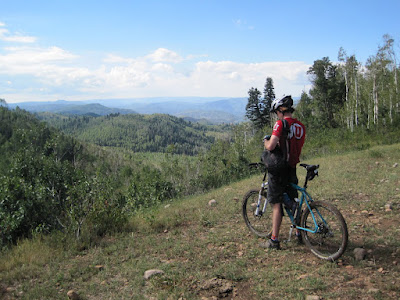The updated Salsa El Mariachi became available in August 2010. I purchased mine as soon as I could. This review applies to the 2011 and 2012 models, being that they are exactly the same except the paint job. Since I bought it, I've ridden it on rocky and rooty tech fests of Eastern Ontario; huge never-ending high mountain climbing of Utah's Wasach range and the Utah southern red rock plateaus; and the perfect roller coaster singletrack of
Paul's Dirty Enduro 100k. Overall I am quite pleased with the bike. However, the bike has taken some getting used to, which I'll detail in what follows.
The loose stuff of the high Wasatch---lots of climbing, lots of descending. The steel platform is good for all-day abuse.
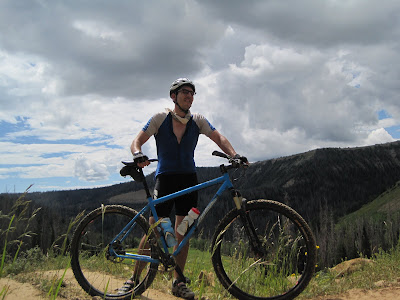
In this picture: pedal grinding 3000' on ATV track in the southern Wasatch plateau (
ride detailed here), mostly a seated climb over bumpy double track, with short steep pitches requiring quick of out-of-saddle bursts. The steel makes for an efficient spin, allowing comfortable saddled climbing. As a reward, I'll eventually circle round and descend on the ridge in the background of the picture---a nice thirty miler in the middle of nowhere save a friendly vaquero I met along the way.
With that for inspiration, lets hash out the technical aspects of the bike:
When considering steel 29er single speed frame choices, I was debating between the El Mar and the
Niner SIR. The main factor in choosing the Salsa was the simple chain tensioning mechanism.
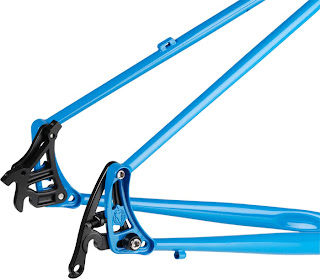
The eccentric rotating bottom bracket (EBB) shell of the SIR seems to have changed every one or two years. To me, this says that Niner has not found an optimal, hassle-free design. Their latest proprietariy EBB
looked interesting, but it requires teflon tape for the friction fit, and changing gear ratios looked like a hassle. Beyond that, EBBs always seem to creak after a while, and all that flex in the BB housing will likely cause premature BB wear. Of course, this is speculation, but my previous Gary Fisher Rig's EBB shell, which was a solid one-piece aluminium unit, went through BBs all the time. The Niner EBB was a two piece cup system that looks like a long-term disaster waiting to happen. Conversely, the Salsa El Mar 2010 re-design switched
away from an EBB design to the "rocker" design seen above. The largest forces on the frame occur at the
BB intersection. Putting additional strain, friction, and creaking by introducing an EBB shell in that location seems like a terrible idea.
The rocker design solves a few problems with dropout tensioners, namely how to have the disk brake still line up with the rotor after adjusting the chain tension. By having the disk brake mount attached to the rocker, the brake is always where it should be. Other tensioning designs are out there that accomplish the same feat, but
they are way more expensive. For further musings, check out Guitar Ted's discussion of chain tensioning mechs
here and
here.
How is the rocker chain tensioning system? Hassle free. On the first few rides, the drive-side bolt shifted a bit, making the rear wheel askew. I think this occurred because the set screws had not fully seated into the seatstay bases. After the first few rides I loosened the bolts, and adjusted the set screws a bit more to re-align the wheel but also to compensate the new chain stretch. After three tries the screws seated and it has not budged with 200 hard miles on it. Hassle free.
How about tire clearance? Great. I have Maxxis Ardent 2.4s currently (big tires), and I've also had Continental Mountain King 2.4s, both on a Stan's ZTR-Arch rim. With either tire, in the full forward position there is still about 1/4 inch clearance on either side. So mud clearance is great. On past ride in Utah, a section of clay mud riding clogged up my buddies geared Yeti 26er bike pretty good with 2.1 Race Kings, while I kept on trucking...
How about price? The secondary factor for me in choosing the El Mar was the price differential; while the SIR has a lighter frame build with Reynolds 853 compared to the Salsa's Sanko, the SIR was more expensive by 300 dollars. I paid 650 CAD for the Salsa, and yes, I'm sure its a slightly heavier frame than the SIR. However, while Reynolds 853 is lighter, it has a reputation of being absurdly flexy and and ride quality suffers, particularly if you are a bigger rider.
Frame geometry? In terms of basic fit, I'm 6'-even with a long torso and shorter legs and arms. I got the 20" large frame. I figure my long torso and short arms cancel each other and make me "normal." My only point of reference for a 29er was my previous Gary Fisher Rig. I loved the way my old bike rode mostly, but the steering felt a bit sluggish, and banked cornering was never its strong suit. I always figured it was a 29er thing, that the long wheelbase was never going to turn on a dime. However, the El Mar is about 1cm shorter in the effective top tube, and this makes the steering more agile. I am happy now. It should be noted that I am using my old rebuilt Reba fork on it with the old-style 38mm offset. A bigger offset on a newer fork (44mm is what I think the rigid companion fork Salsa makes for the El Mar) should make the steering even more snappy, but what I have is fine for me now.
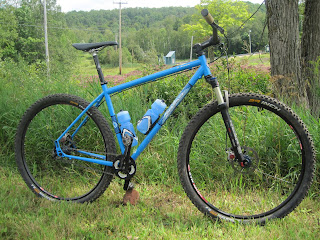
However, the biggest difference between the GF Rig and the El Mar is the BB drop: 50mm on the Rig, and 60 on the El Mar, but it seems even further down to me. Note that the 50mm number is a fiction, because the Rig's EBB dictates there are usually two BB position options to pick, one above 50 and one below. For the technical rocky trails of the
South March Highlands, I used to rotate the EBB of my GF Rig to the "up" position to add more pedal clearance to ride obstacles. Hence, with the El Mar, I deal with pedal strike issues. There are many short bursty climbs that are a crap shoot on the El Mar. A pedal strike will stop you cold. Now don't get me wrong, the 60mm drop is very conventional for 29ers, with many brands going even lower to 70mm---Niner and Vassago! If the El Mar were any lower it would make technical East Coast riding very hard. Although out West in Utah, where the smoother flowing trails abound, I never had a problem with pedal strikes. But if you have to hammer through a rock garden, the low BB adds new factors to the equation: you have to time each pedal stroke to get through.
The lower BB has distinct advantages however. First, you can have a more upright riding stance where you are more between the wheels rather than on top of them. Most importantly, it allows for better banked cornering: The lower your feet are, the better control you have over the the angle at which you bank the bike. Contrary to popular belief, reducing your center of gravity by 1 cm is a miniscule change, since your CG is way up in your abdomen (the percent change is less than 1%), hence, CG does not play a huge role in why BB height is important for cornering (see Dave Moulton's
blog post on this). At Paul's Dirty Enduro, I really felt the increased cornering stability when transitioning from leaning one way to another on the arcing singletrack course. Many people describe a low-BB bike as if it is "riding on rails." I agree.
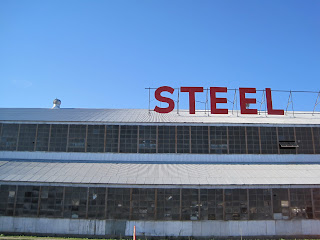
This bike is steel. Steel is soft, flexy, and oh so comfy to ride. On mildly bumpy trails, you can stay in your saddle and pedal more efficiently without killing your arse. On dirt roads in the west I found this particularly nice. For traction issues, steel is nice for reducing some tire slipping torquing and maintaining traction. I really feel the difference between the aluminium Rig versus the steel El Mar. Although, steel can feel like a wet noodle when you really have to hammer. There is a detectable wind-up in the steel frame as one accelerates really hard. For east coast tech riding I've found I have to time my accelerations slightly sooner in order to get the right torque to the wheels in time to ride over all those rock obstacles.
I hope this post helps anybody thinking about the El Mariachi, or basic 29er geometry questions. If you liked this discussion, feel free to leave a comment. Put in your 2 cents.















